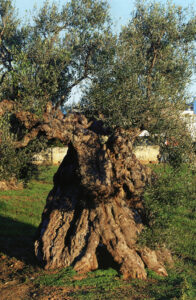 A deadly disease is ravaging Italy’s olive trees unchecked, killing one million trees in Italy and potentially threatening millions more throughout Europe. Scientists first discovered the bacteria, Xylella fastidiosa, in 2013, when ancient olive trees in Puglia started dying—one million trees in Salento, 10 percent of the region’s total, have been affected. Since then, Xylella has been found in Tuscany, France, Spain and Portugal.
A deadly disease is ravaging Italy’s olive trees unchecked, killing one million trees in Italy and potentially threatening millions more throughout Europe. Scientists first discovered the bacteria, Xylella fastidiosa, in 2013, when ancient olive trees in Puglia started dying—one million trees in Salento, 10 percent of the region’s total, have been affected. Since then, Xylella has been found in Tuscany, France, Spain and Portugal.
Scientists aren’t sure where the bacteria came from or how to cure it, leading the EU to take emergency measures in affected areas, including culling large swaths of olive trees in southern Italy.
Trees that have been infected by Xylella may carry the disease for up to a year before showing signs of infection. They then become stunted in growth, lose their leaves, and ultimately die. There is currently no treatment or cure.
The European Food Safety Agency (EFSA) recently published a report warning of the potential impact to crops throughout Europe if the recommended emergency control measures are not taken. Besides olive trees, Xylella can kill more than 200 types of plants, including grapevines and fruit trees, which could lead to a catastrophic outcome for European crops. Xylella already caused olive oil prices to increase in 2015 in Italy, which is the world’s second-largest olive oil producer after Spain.
“EFSA used computer modelling to simulate how X. fastidiosa spreads across short and long distances under different conditions,” the EFSA said. “The modelling showed the importance of implementing control measures, such as those specified by the European Commission, to prevent further spread and even eradicate outbreaks.”
